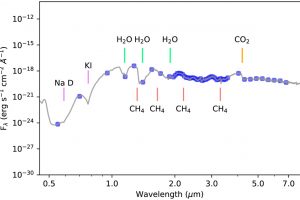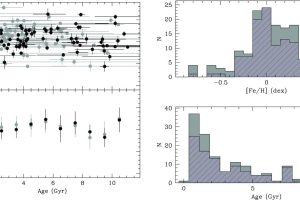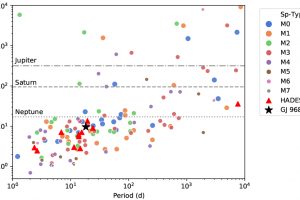A binary system in orbital synchronization. The study: “The GAPS programme at TNG. XLIII. A massive brown dwarf orbiting the active M dwarf TOI-5375” of J. Maldonado (INAF – OAPA) appeared on A&A

Nature sets a lower limit on stellar masses: objects less massive than 0.07-0.08 solar masses are incapable of initiating the thermonuclear reactions that power more massive stars. Below this threshold lies the realm of brown dwarfs, objects whose mass is too small to qualify as stars, yet too large to be categorized as planets. The mechanism responsible for the
» Read more


